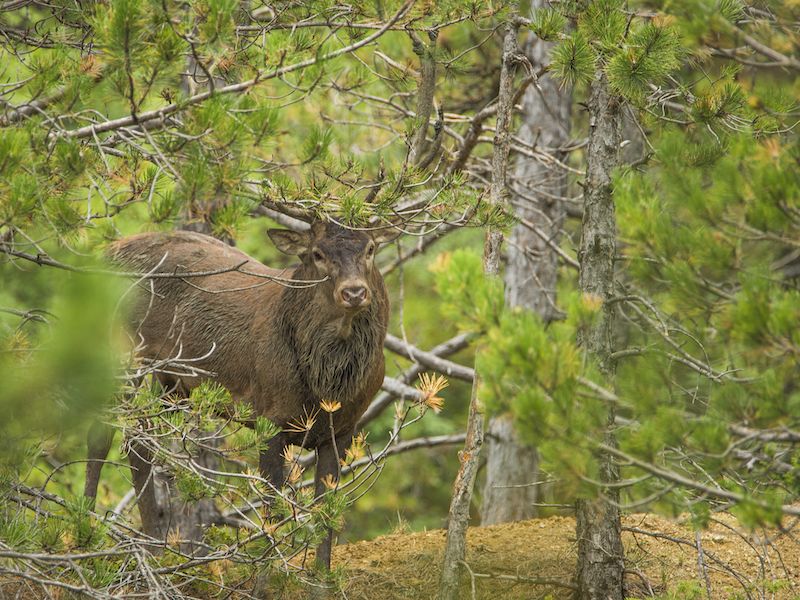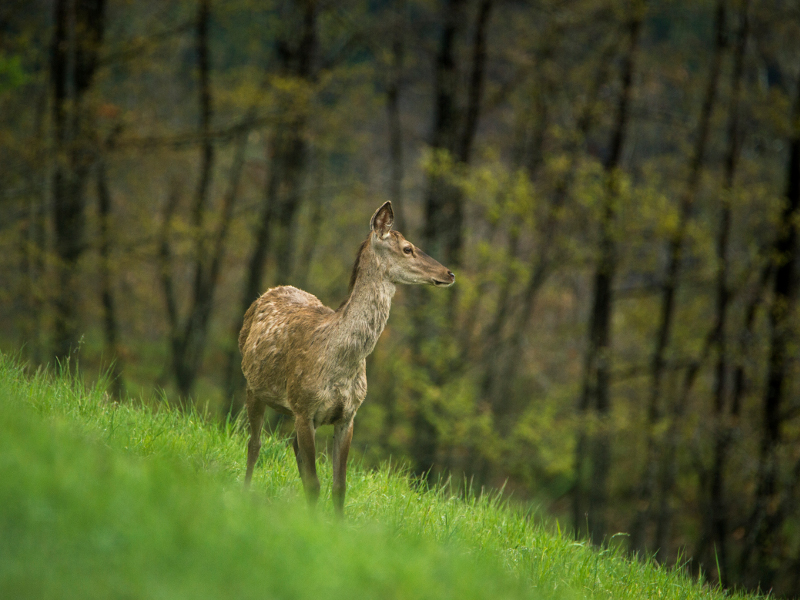Home » Nature and Territory » Parco Storico Regionale di Monte Sole » Protected Area
Fauna
Park's territory - consisting of a thick mosaic of habitats - is the ideal environment for a wide range of animal species. Besides the most common species, Park's fauna is enriched by the presence of very interesting animal populations.
Ungulates have been settling in this territory again for few decades, a well organized deer population is living here together with a few roe deers which cannot expand, even though environment structure is perfectly suitable for them to spread. Also the fallow deer and the wild boar live in this area.
Ungulates have been settling in this territory again for few decades, a well organized deer population is living here together with a few roe deers which cannot expand, even though environment structure is perfectly suitable for them to spread. Also the fallow deer and the wild boar live in this area.
The first is considered an alien species as it was introduced in Roman times; the second was recently brought here for hunting purposes, at times even illegally, using subspecies from northeastern Europe.
The woods are home to the dormouse and the squirrel, which feeds on tree seeds, thereby helping to disperse trees because of its tendency to bury surplus food. The hazel dormouse can also be found outside of forest environments as it prefers shrubs and undergrowth.
The specific composition of the park's avifauna is certainly rich, featuring more than 60 bird species.
Various species of diurnal and nocturnal raptors nest in the rocky cliffs and in the dense forests. Two important birds of prey are the Montagu's harrier, which inhabits grasslands and cereal crops, where it nests and hunts its prey, and the European honey buzzard, which nests in trees and feeds on insects, lizards and small mammals.
The red-backed shrike, the Western Bonelli's warbler, the common whitethroat and the subalpine warbler all find shelter in the small shrubs, which have grown in abandoned farmlands. The mature forests in the Monte Salvaro area are home to the European green woodpecker, the wood nuthatch and the short-toed treecreeper, whereas the common kingfisher and the little ringed plover prefer freshwater environments.
An important presence in the park is that of the European nightjar, difficult to spot because of its ability to camouflage itself. It feeds on insects that it catches in flight at dusk or at night. The European nightjar inhabits forests, especially those that are sparse, sunny and dry.
2024 © Ente di gestione per i Parchi e la Biodiversità - Emilia Orientale
Piazza XX Settembre, 1 - 40043 Marzabotto (BO)
Tel. +39 051 6701260-6254811 - Fax +39 051 6254521
E-mail protocollo@enteparchi.bo.it - PEC enteparchibo@cert.provincia.bo.it
P.IVA CF 03171551207
Codice univoco per la fatturazione elettronica: UF2KK4
E-mail protocollo@enteparchi.bo.it - PEC enteparchibo@cert.provincia.bo.it
P.IVA CF 03171551207
Codice univoco per la fatturazione elettronica: UF2KK4




